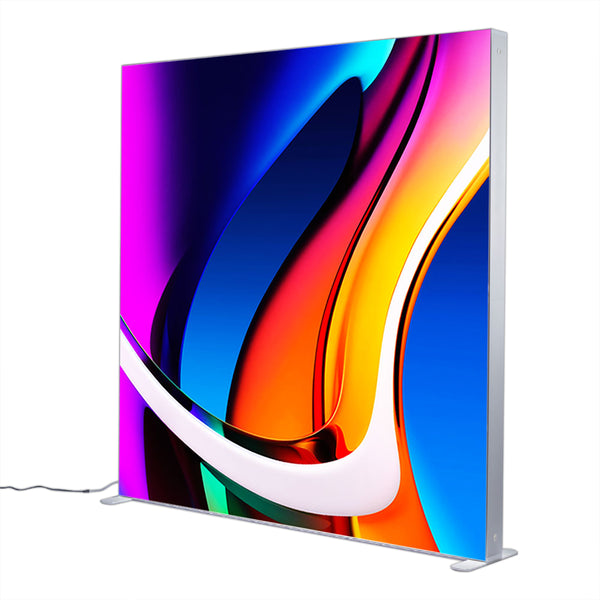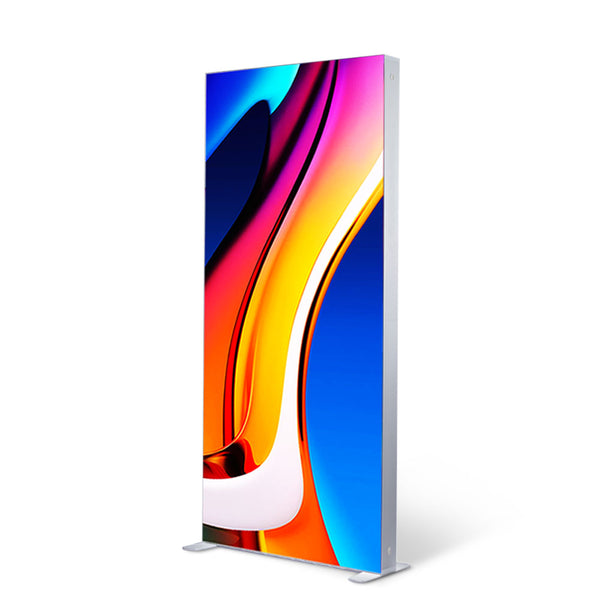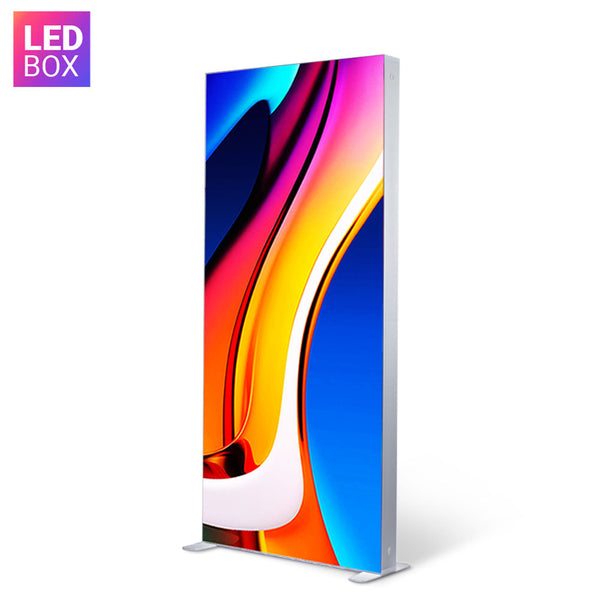Why should you brand mailer boxes?

What is a mailer box?
A mailer box is a type of cardboard box that is specifically designed for the purpose of mailing items through the post. They are generally made from corrugated cardboard, which is strong and durable enough to withstand the rigors of shipping. Mailer boxes come in a variety of sizes and styles, and can be used to mail everything from small items such as jewelry or DVDs to larger items such as books or clothing. Some mailer boxes are also equipped with additional features such as padded lining or self-sealing flaps to help protect the contents during shipping.
Can cardboard boxes be customized?
Yes, cardboard boxes can be customized. Many companies offer custom cardboard boxes, which allow you to choose the size, shape, and design of the box to meet your specific needs. You can also have your company's logo or other branding elements printed on the box, which can be a good way to promote your brand and make your company stand out. If you are interested in customizing cardboard boxes, you can contact vividads.com.au that specializes in producing custom packaging solutions. We will be able to assist you in designing and creating the perfect cardboard boxes for your needs.
Are custom boxes worth it?
If you are considering having custom boxes made for a business, it can be a worthwhile investment if it helps to differentiate your products and enhance the customer's experience. Custom packaging can also be a good way to build brand recognition and establish your business as a premium brand. On the other hand, custom packaging can be more expensive than off-the-shelf options, so it is important to weigh the costs and benefits before making a decision.
If you are considering buying custom boxes for personal use, it may not be worth it unless you have a specific need that cannot be met by standard boxes. In general, it is usually more cost-effective to purchase standard boxes and customize them with labels or other branding elements, rather than commissioning a custom box from scratch.
Why do we use custom packaging boxes?
There are many reasons why people use custom packaging boxes. Here are a few:
- Custom packaging boxes allow businesses to create a unique and branded appearance for their products. This can help to distinguish their products from those of their competitors and build customer loyalty.
- Custom packaging boxes can be designed to fit a specific product perfectly, providing additional protection during shipping and handling. This can be especially important for products that are fragile or have a unique shape.
- Custom packaging boxes can be made with materials that are specifically chosen for their ability to protect the contents of the box. For example, boxes can be made with corrugated cardboard or foam inserts to provide extra cushioning.
- Custom packaging boxes can be designed to serve a specific function or meet a specific need. For example, boxes can be designed to be reusable or to be easily assembled and disassembled for storage.
Overall, custom packaging boxes are a practical and effective way to package and protect products, and they can also be used to create a strong brand identity and build customer loyalty.
What is custom boxes packaging?
Custom boxes packaging refers to the creation and production of custom-designed boxes for packaging products. These boxes are typically made to specific dimensions and may include custom printing or branding elements. Custom boxes can be made from a variety of materials, such as cardboard, paperboard, corrugated fiberboard, plastic, or wood. They are used for a wide range of products, including food, cosmetics, electronics, and clothing. Custom boxes are often used to enhance the branding and marketing of a product, as well as to provide protection during shipping and handling.
What are the 3 main purposes of packaging?
There are several purposes of packaging, but some of the main ones include:
- Protection: Packaging helps to protect the product during transportation and handling. It can help to prevent damage from occurring, such as breakage, crushing, or moisture damage.
- Containment: Packaging helps to contain the product, keeping it in a specific shape or form and preventing it from spilling or scattering.
- Communication: Packaging can also serve as a means of communication, providing information about the product, such as its ingredients, expiration date, and instructions for use. It can also serve as a marketing tool, helping to attract the attention of consumers and differentiate the product from others on the market.
What is the main purpose of package design?
The main purpose of package design is to protect and contain a product, and to attract the attention of potential customers. A package design can also communicate information about the product, such as its brand, ingredients, and instructions for use. Additionally, a well-designed package can help to differentiate a product from its competitors and make it more appealing to consumers.
What does package design include?
Package design refers to the process of designing the physical packaging for a product. This can include the design of the container or packaging material itself, as well as any labeling, branding, or other graphics that will be applied to the package. The goal of package design is to create a packaging solution that is attractive, functional, and effective at protecting and promoting the product. Some factors that may be considered in package design include the size and shape of the product, the materials used in the packaging, the intended use of the product, and any regulatory or legal requirements that must be met.
What are the three steps of package design?
The three steps of package design are:
- Research: This involves gathering information about the product, the target market, and the competition. This helps to identify the needs and preferences of the target market and to understand how the product can be positioned in the market.
- Concept development: During this step, the designer creates initial concepts and ideas for the package. This may involve sketching, prototyping, and testing different ideas to see what works best.
- Implementation: The final step involves bringing the chosen design concept to life and producing the final package. This may involve creating detailed artwork and specifications for the package, as well as coordinating with manufacturers to produce and distribute the package.
How do I design my own packaging?
Designing your own packaging can be a fun and creative process. Here are a few steps to help you get started:
- Determine the purpose of your packaging. What will it be used for? How will it be displayed? Will it be shipped or sold in a retail setting?
- Consider the materials you will use. Different materials have different properties, such as durability, cost, and environmental impact.
- Think about the size and shape of your packaging. Will it be a box, a bag, a pouch, or something else? The size and shape should be appropriate for the product it will hold and the way it will be used.
- Decide on a color scheme and overall aesthetic. Choose colors and graphics that are appropriate for your brand and the product you are packaging.
- Create a prototype. You can use a computer program like Adobe Illustrator or a physical mock-up to get a sense of how your packaging will look and function.
- Test your packaging. Before you start producing your packaging in large quantities, make sure to test it to ensure it is functional and visually appealing.
What are the four P's of packaging?
The four P's of packaging refer to the four primary elements of packaging: product, promotion, price, and place. These elements are used to create an overall marketing strategy for a product and to determine how the product will be packaged and presented to the consumer.
- Product: The product itself is a key element of packaging, as the packaging needs to protect and support the product. The packaging should also communicate the benefits and features of the product to the consumer.
- Promotion: Packaging can be used to promote the product and communicate its value to the consumer. This can be done through the use of branding, labels, and other marketing materials on the packaging.
- Price: The price of the product should be considered when designing the packaging, as the packaging should reflect the value of the product and appeal to the target market.
- Place: The place where the product will be sold, such as a retail store or online, should also be taken into account when designing the packaging. The packaging should be suitable for the channel of distribution and the expectations of the consumer in that channel.
What are the four 4 Factors to Consider in packaging?
There are many factors that can be considered when designing and selecting packaging for a product. Some common factors to consider include:
- Functionality: The packaging should protect and contain the product, as well as be easy to open and close.
- Sustainability: Packaging should be environmentally friendly and minimize waste.
- Cost: Packaging should be cost-effective and meet budget constraints.
- Marketing: Packaging can also play a role in marketing and branding efforts, and should be visually appealing and consistent with the overall marketing strategy for the product.
What are the 6 requirements of packaging?
There are six general requirements that packaging must meet, regardless of the product it is containing or the specific industry it is used in. These requirements are:
- Protection: Packaging must protect the product from damage during transportation and handling.
- Containment: Packaging must be able to hold and contain the product, preventing spills or leaks.
- Preservation: Packaging must be able to keep the product fresh, safe, and in good condition for as long as possible.
- Communication: Packaging must provide information about the product, such as its ingredients, instructions for use, and any necessary warnings.
- Convenience: Packaging should be easy to open, close, and use, and should be suitable for the intended use of the product.
- Sustainability: Packaging should be environmentally friendly and should minimize waste.
These requirements are all important considerations in the design and selection of packaging materials and formats.
What is the most important element of packaging?
The most important element of packaging depends on the product being packaged and the goals of the packaging. Some common goals of packaging include protecting the product, promoting the product, and making the product convenient to use or store. Some common elements of packaging that contribute to these goals include the packaging material, the packaging design, and the packaging size and shape.
What are the four most common types of packaging materials?
The four most common types of packaging materials are:
- Paper and cardboard - These materials are widely used for packaging a variety of products, including food, consumer goods, and industrial products. They are relatively inexpensive, lightweight, and easy to print on, making them a popular choice for packaging.
- Plastic - Plastic is another common packaging material that is used for a wide range of products. It is lightweight, moisture-resistant, and durable, making it ideal for packaging products that need to be protected from the elements.
- Glass - Glass is often used for packaging food and beverages, particularly those that are acidic or carbonated. It is also used for packaging some types of consumer goods, such as cosmetics and fragrances.
- Metal - Metal is a strong and durable material that is often used for packaging products that need to be protected from tampering or damage. It is commonly used for packaging products such as beverages, food, and household products.
What is the most common type of box used as package?
There are many types of boxes that are commonly used as packaging materials, and the most common type may depend on the specific industry or application. Some of the most common types of boxes include corrugated boxes, cardboard boxes, and plastic boxes. Corrugated boxes are made from corrugated paperboard and are often used for shipping heavy items due to their strength and durability. Cardboard boxes are made from paper pulp and are commonly used for packaging a wide variety of products, from food to electronics. Plastic boxes are also commonly used for packaging and are available in a range of sizes and styles, including clear plastic boxes that allow the contents to be visible.
What is the difference between shipping boxes and Mailer boxes?
Shipping boxes are typically larger and stronger than mailer boxes and are used for shipping products or goods from one place to another. They are designed to withstand the rigors of shipping, such as handling and transportation, and are made from strong, durable materials like corrugated cardboard.
Mailer boxes, on the other hand, are smaller and lighter than shipping boxes and are used for mailing or shipping smaller items that do not require as much protection. They are often made from lightweight materials like paperboard or cardboard, and may have features like peel-and-seal flaps or self-adhesive closures to make them easy to close and seal.
In general, shipping boxes are used for shipping items that need more protection during transport, while mailer boxes are used for smaller items that do not require as much protection.
Order your custom mailer boxes from vividads.com.au
Vividads.com.au is a company that specializes in custom mailer boxes. They can help you design and create custom mailer boxes to your specific needs and preferences. This could include customizing the size, shape, material, and printing of the boxes to meet your requirements. You can contact Vividads.com.au directly to discuss your specific needs and get a quote for their custom mailer box services.




